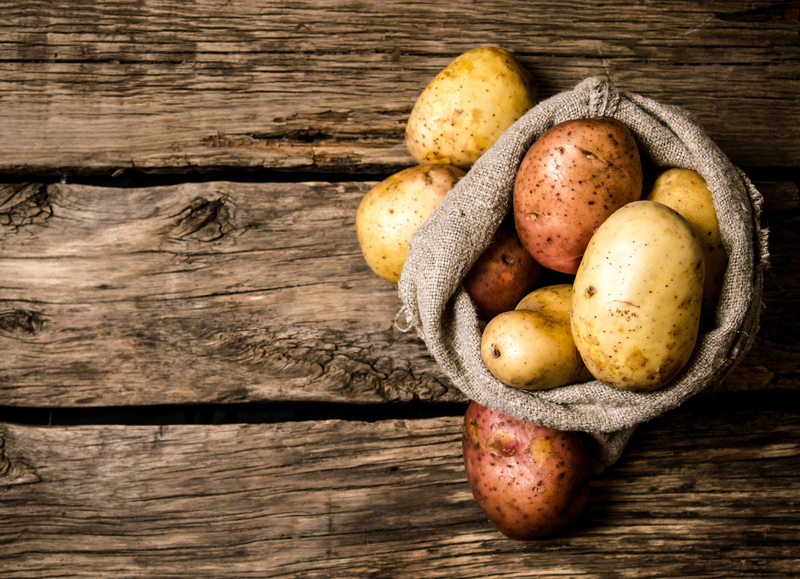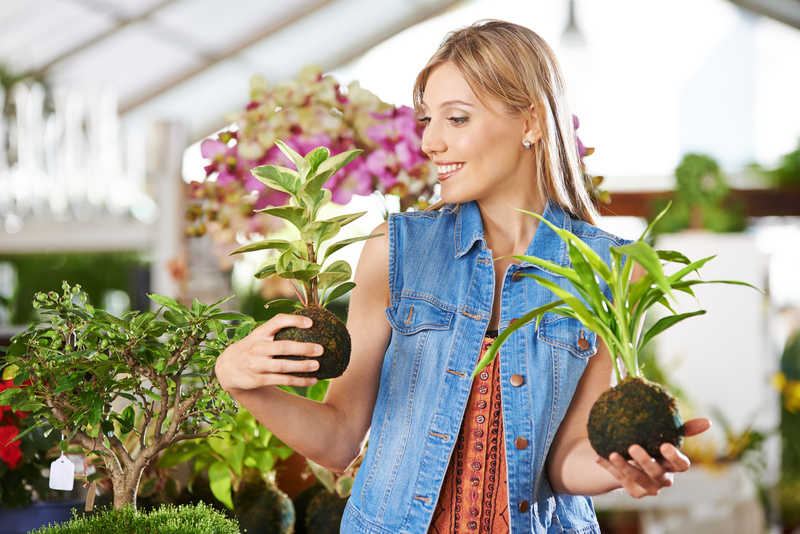Bring Imagination to Life with a Child-Centric Garden
Posted on 22/09/2025
Bring Imagination to Life with a Child-Centric Garden
Looking for a way to ignite your child's imagination, inspire a love for nature, and foster lifelong memories? A child-centric garden could be the magical solution. Using thoughtful design, creative features, and interactive elements, you can transform a simple outdoor space into an adventure-filled paradise that captivates little ones and encourages them to connect with the natural world. In this guide, we'll walk you through powerful ideas and practical tips to bring imagination to life with a child-focused garden.
Why Create a Child-Centric Garden?
Children are naturally curious and imaginative. A child-friendly garden isn't just about play--it's about nurturing creativity, supporting physical development, introducing stewardship for nature, and encouraging imaginative exploration. Gardening with children introduces them to science, art, storytelling, and life skills in a playful, hands-on manner.
- Enhances physical and mental health by encouraging outdoor play and exploration
- Provides opportunities for creative problem-solving and critical thinking
- Fosters connection with nature--leading to greater environmental awareness
- Encourages collaborative play among siblings and friends
- Promotes independence through age-appropriate gardening tasks
Child-Centric Gardens Foster Lifelong Skills
A garden designed for children allows kids to develop a host of skills--from fine motor abilities while planting seeds, to patience as they watch their garden grow. It's also an organic way to teach responsibility and discipline, while providing a canvas for imagination through play and storytelling.

Essential Elements of a Magical Child-Friendly Garden
Designing your imaginative child-centric garden begins with understanding what sparks wonderment for kids. A successful space should feel personal, engaging, and safe, while offering endless opportunities for discovery and fun.
Key Features of a Child-Centric Garden Design
- Safe, Inviting Pathways: Winding trails, stepping stones, or log rounds create mystery and adventure
- Secluded hideaways: Teepees, willow domes, or play tents for secret clubhouses
- Natural play structures: Logs to climb on, boulders to balance, or homemade forts
- Colorful, sensory plantings: Flowers to smell, grasses to tickle feet, herbs to touch and taste
- Interactive elements: Musical features, mud kitchens, water play, and fairy gardens
- Personalized touches: Signs with your child's name, painted rocks, or their own veggie patch
- Wildlife habitats: Bird feeders, bug hotels, and butterfly or bee-friendly plants
Safety Considerations
Safety is a key foundation for any child-centric outdoor area. Choose non-toxic plants, avoid sharp or breakable garden ornaments, and create clear sightlines so you can supervise play. Use soft ground covers like grass or mulch under climbing elements, and ensure raised beds or structures are secure and stable.
Stimulate the Imagination: Creative Themes for Children's Gardens
The beauty of a garden designed with imagination in mind is its flexibility--you can create a theme that excites your child's interests and evolves as they grow. Here are a few inspiring themes to fuel creativity and adventure:
1. Fairy Tale Garden
- Plant whimsical flowers (foxglove, bleeding heart, violets)
- Add miniature fairy houses, toadstool stools, and pebble paths
- Incorporate sparkling wind chimes and hidden "treasures" to discover
2. Sensory Adventure Garden
- Soft lamb's ear and moss for touch
- Scented herbs like lavender, mint, or lemon balm
- Edible crops to taste: strawberries, cherry tomatoes, or snap peas
- Grasses that rustle in the breeze and tall sunflowers to gaze up at
3. Wildlife Wonderland
- Install butterfly-attracting flowers and a bug hotel
- Add a shallow birdbath
- Native plants to support local pollinators
4. Edible Teaching Garden
- Raised beds or decorated containers for each child
- Choose colorful, easy-to-grow crops (rainbow carrots, cherry tomatoes, purple beans)
- Personal garden markers or labels made by your kids
5. Adventure Playground
- Balance beams, log steppers, and stepping stones
- Mini climbing wall or tree swing
- Sandpit or mud kitchen for open-ended creation
How to Design a Child-Focused Garden That Grows With Them
A successful garden for imaginative children adapts to changing interests and abilities. When planning your space:
- Involve children in the design process--let them choose plants, features, and even paint garden signs
- Leave room for evolution--modular raised beds, movable play features, and unstructured play areas work best
- Mix permanent "anchors" (trees, large shrubs, climbing structures) with temporary elements (annual flowers, seasonal art, loose parts play)
- Use zones or rooms--hidden corners, open lawns, and defined play spaces keep interest high
Checklist: Must-Haves for an Imaginative Child-Centric Garden
- Open-ended play spaces--not every area needs a set purpose
- Spaces for quiet and spaces for energy
- Water feature or mud area (water table, small pond, or trickle stream)
- Living tunnels or willow wigwams for shelter and secret play
- Growth tracking for science projects (measuring sunflower or pumpkin vines, nature journals)
- A sense of ownership--customized garden signs, painted rocks, personal work gloves
Incorporate Interactive Learning into Your Imaginative Garden
A child-centred garden can double as a living classroom. Use your outdoor haven as a springboard for:
- Science experiments: Seed germination, composting worms, or observing pollinators
- Math skills: Counting petals, measuring rainfall, or comparing plant heights
- Storytelling: Inventing tales about garden sprites or animal visitors
- Art projects: Nature collages, petal mandalas, or painted rocks
- Life skills: Learning patience, responsibility, and teamwork
Garden-Inspired Activities to Fire Up Imagination
- Create a scavenger hunt for bugs, colors, or interesting leaf shapes
- Build a mini-village with sticks, bark, and pebbles
- Host a garden tea party with edible flowers and herbal teas
- Press flowers for crafts or homemade cards
- Write garden journals or illustrated "field guides"
Choosing Child-Safe Plants for a Creative Kid's Garden
A garden designed with children in mind starts with careful plant selection. Pick varieties that thrill the senses but are safe for little hands (and mouths).
- Sunflowers--towering, cheerful, and easy to grow
- Nasturtiums--edible flowers with peppery leaves, great for salads
- Marigolds, cosmos, and zinnias--bright, rewarding blooms
- Herbs--mint, basil, rosemary, and sage are aromatic and useful
- Sensory plants--lamb's ear (soft), silver sage (silky), fragrant lavender
- Edible fruits and veggies--cherry tomatoes, strawberries, peas, and beans
Important: Avoid toxic plants such as foxglove, oleander, nightshade, castor beans, and daffodil bulbs if children will access the area unsupervised.
Easy DIY Projects: Personalizing Your Child-Centric Garden
Make your imaginative garden for kids even more special with creative homemade touches. These projects are fun for little helpers and add personality to your outdoor space:
- Painted stepping stones with kids' handprints or favorite animals
- DIY wind chimes using old cutlery, shells, or beads
- Homemade teepees or willow domes from garden stakes and twine
- Personalized plant markers--painted rocks or popsicle sticks with names
- Mini mud kitchens from upcycled pallets or crates
- Bug hotel crafted from bamboo canes, bundles of twigs, and pinecones
Encouraging Connection and Family Fun in the Child-Centric Garden
Your imaginative child-centric garden is not just a backdrop for creativity--it's a gathering space for the whole family. Share the magic by:
- Hosting outdoor family dinners or picnic lunches
- Reading books together in a cozy garden nook
- Stargazing on warm summer nights
- Celebrating harvests with a "garden party" for friends and neighbors
- Documenting garden growth with photos, art, and scrapbooks
Tips for Low-Maintenance, High-Impact Child-Friendly Gardens
A kids' garden shouldn't be overwhelming to maintain. Set your family up for success with these simple tips:
- Focus on hardy, low-maintenance plants
- Mulch beds to reduce weeds and prevent muddy messes
- Use raised beds or containers for easier kid access
- Establish clear paths with wood chips or stepping stones
- Keep tools and gloves child-sized and accessible
- Involve children in daily watering, weeding, and harvesting routines

Final Thoughts: Growing Magic, Memories, and Minds
Bring your child's imagination and creativity to life with a child-centric garden designed thoughtfully for both play and learning. By combining playful elements, hands-on opportunities, and a dash of whimsy, you'll create a backyard that is more than just a garden--it's a magical world full of adventure, exploration, discovery, and shared joy. Let your child's imagination run wild, and watch their curiosity and confidence bloom with every new plant and project.
Ready to start your own imaginative children's garden? Embrace creativity, adapt your plan as your child grows, and explore the world together--one magical garden story at a time.
- Explore new ideas--listen to your children's interests and try fresh themes
- Make safety a priority with thoughtful design and plant choice
- Incorporate learning and play for a well-rounded garden adventure
- Above all, have fun and grow together!
Frequently Asked Questions About Imagination Gardens for Kids
What is a child-centric garden?
A child-centric garden is an outdoor space designed with children's needs, safety, and interests in mind. These gardens prioritize interactive features, imagination, sensory experiences, and safe play areas.
How do I keep my child engaged in the garden?
Get creative! Rotate activities, plant quick-growing seeds, add seasonal decorations, and include open-ended spaces for free play or quiet time. *Involve children in every stage*, from planning to planting to harvesting.
Which plants are best for a kids' imaginative garden?
Choose non-toxic, edible, and sensory-rich plants. Top picks include sunflowers, nasturtium, mint, strawberries, and lamb's ear. Avoid anything toxic, spiny, or high-maintenance.
Can I create a child-friendly garden in a small space?
Absolutely! Use raised beds, containers, or vertical structures. Even a small balcony or patio can become a miniature world of wonder with thoughtful arrangements and interactive features.
Bring imagination to life with a child-centric garden--and watch your outdoor sanctuary become a place where childhood dreams and memorable adventures grow every day.

